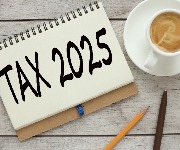Flexibility Comes At A Price!

Although flexiloans are a handy way to borrow money for a short period, this convenience comes at a high price. Look out for these danger signs.
According to independent financial researcher Moneyfacts, this has been a busy month for lenders who provide flexiloans to borrowers.
A flexiloan (also known as a flexible loan or revolving-credit agreement) works in a similar fashion to an overdraft, in that you're given a credit limit up to which you can spend. However, you must make regular (usually monthly) repayments which pay off your interest bill plus a slice of your debt (but the amount repaid can be immediately re-borrowed).
The handy thing about a flexiloan is that you can spend freely within your credit limit, make one-off or regular overpayments without penalty, and repay your entire debt without early settlement charges. Furthermore, your interest bill is calculated daily and charged to your account each month, so flexiloans also share some of the characteristics of credit cards. However, flexiloans have no cash-withdrawal or arrangement fees (with the exception of NatWest's), which set them apart from credit cards and overdrafts.
According to Moneyfacts, the flexiloan market has undergone something of an upheaval over the past month. Marks & Spencer Money (now part of HSBC) withdrew its Personal Reserve account, while Cahoot increased its interest rate by 2% a year to 8.9% APR, and HSBC increased its rate by 1.1% to 15.9% APR. This leaves the flexiloan market with only five participants, as follows (sorted from lowest to highest interest rate):
Lender | Flexiloan limits | APR (%) | Minimum repayment/ |
|---|---|---|---|
Cahoot | £1,000 to £20,000 | 8.9 | Greater of 2% of limit or |
NatWest* | £5,000 upwards | 10.0 | Negotiable/Anything from |
Barclays | £500 to £15,000 | 11.9 | Greater of 3% of limit or |
Co-operative Bank | £2,000 to £10,000 | 13.9 | Greater of 3% of limit or |
HSBC | £500 to £5,000 | 15.9 | Fixed between 4% and |
As you can see, the cheapest flexiloan comes from Cahoot, which charges just 8.9% APR on borrowing up to £20,000, compared to a hefty 15.9% APR at HSBC. The average interest rate across these five flexiloans comes to about 12.1% APR, making them cheaper than most credit cards (average rate: 15.6% APR), but more expensive than many personal loans, which can be found at under 6% APR.
However, as a reformed "debt addict", I'm not a big fan of flexiloans -- not least because it took a real effort to repay mine. In my bad old days (the late Nineties, when I had nearly £50,000 in non-mortgage debts), I had a £3,000 Personal Reserve flexiloan with Marks & Spencer. This charged an interest rate of 1.45% a month (18.9%) APR, and required a monthly repayment of 3% of the credit limit (in my case, £90).
Because my flexiloan didn't charge fees for withdrawals or writing cheques, I frequently used it to top up my overdraft or pay other debts, so I was always close to my £3,000 limit. In other words, almost half (£43.50) of my monthly repayment of £90 was gobbled up by interest, and then I'd re-borrow the remaining £46.50, leaving my debt just shy of my credit limit. Oops!
Although withdrawing cash from a flexiloan account is much cheaper than using your credit card in a cash machine (which incurs a withdrawal fee of 2%, plus cash APRs in excess of 20%), this can work against you. Indeed, this is the real problem with flexiloans: that they are easy to fall back on and therefore, having one is an indication that you have problems with budgeting and managing your debts, as I once did!
A flexiloan may be useful for short-term, fee-free borrowing, but once you come to rely on this handy reserve, it becomes damn difficult to clear. What's more, the relatively low monthly repayments on flexiloans mean that they can take many years to repay; for example, repaying a Co-operative Bank flexiloan at 2% a month when your monthly interest bill is 1.09% is going to take a looooong time!
In short, most borrowers would be better off ditching their flexiloans in favour of low-rate personal loans, because the fixed repayment structure of personal loans means that they are sure to be repaid over a pre-determined period -- and at a much lower interest rate. Alternatively, transferring existing credit- and store-card debts to a 0% credit card will freeze your interest bill for up to a year and give you a valuable breathing space to tackle your debts with renewed vigour!
So, be warned: in debt terms, taking out a revolving-credit agreement is a bit like putting a revolver to your head -- very dangerous indeed!
More: Use the Fool to compare credit cards, compare personal loans and compare savings accounts!
Most Recent
Comments
Be the first to comment
Do you want to comment on this article? You need to be signed in for this feature








